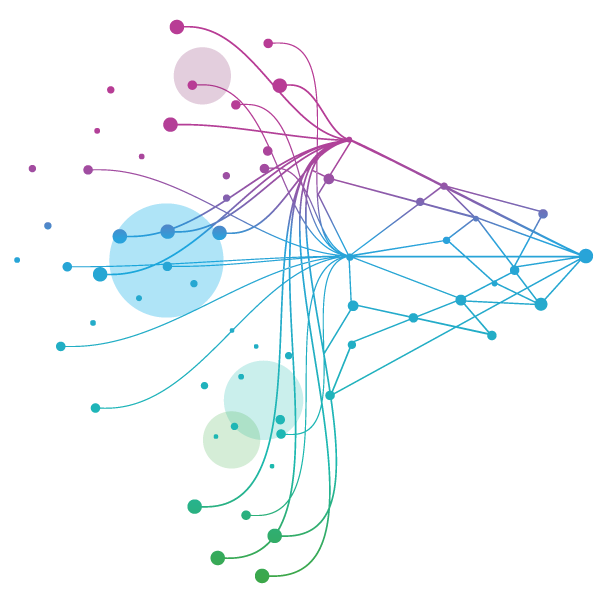





















Introduction
In today’s rapidly evolving healthcare environment, healthcare professionals (HCPs) are increasingly overstretched, harder to reach, and becoming more self-sufficient (enabled by advances in AI). As a result, the opportunity for pharmaceutical companies to engage with HCPs is narrowing, and improving the quality of customer engagement matters more than ever. A key component of this includes understanding evolving HCP channel preferences. Whilst pharma companies also need to understand which channels HCPs actually use, and which channels have the greatest commercial impact, prioritising preferred channels is more likely to drive meaningful engagements.
Over the past nine years, IQVIA has meticulously analysed the promotional landscape by surveying HCPs about their preferred engagement channels with pharmaceutical companies. The newly published results from the 2025 ChannelDynamics™ Channel Preference Survey draw on feedback from more than 33,000 HCPs across 38 countries (Figure 1), all of whom responded to the following question:
“Please enter - as a percentage - the mix of interactions you would generally prefer over the course of a year. For example, if you would prefer about half of your interactions to be face-to-face, 1:1 in-person visits, please indicate 50%”
Building on these insights, this article explores the evolving trends in HCP channel preferences at global and country levels, highlighting annual progression and the influence of characteristics such as specialty, age, and gender.

Mind The Gap: Navigating Promotional Misalignments in 2025
The 2025 Channel Preference Survey highlights a notable gap between HCPs’ preferred and actual engagement channels in the top five European countries (see Figure 2). Italy and Spain show the highest alignment, with 67% and 62% of interactions matching preferences, while the UK and Germany have the lowest at 43%. Key channels driving both alignment and misalignment include face-to-face (F2F) interactions, email and post. Since 2024, channel alignment has declined slightly in Italy, Spain, and Germany, but improved in the UK (+5%), suggesting successful efforts to better match engagement strategies with HCP preferences.1
Figure 2 demonstrates considerable variation in the alignment between HCPs’ preferred and actual engagement channels across different specialties. Dermatologists, GPs, and ophthalmologists exhibit the highest levels of channel alignment at over 60%. In contrast, this alignment falls below 50% for oncologists, haematologists, and nurses. Factors such as the nature of clinical work, schedule predictability, and work in outpatient settings may all contribute to these disparities by influencing HCPs’ flexibility in choosing and responding to engagements.

Navigating Channel Complexity: Country Disparities
At a combined EU4+UK and US level, channel preferences remain largely unchanged from 2024.1 Individual F2F interactions still account for a substantial 40% of all channel preferences, maintaining the trend observed over the past two years (see Figure 3). In-person conferences continue to hold second place at 16%, consistent with both 2023 and 2024. Notably however, the preference for email has grown steadily since the pandemic, reaching a new peak of 15% in 2025, reflecting HCPs’ increasing preference for this remote and asynchronous communication channel.
Regarding preference for F2F interactions across individual countries, there are marked differences. For instance, Turkey leads with 51% of HCPs favouring F2F meetings, whereas this preference is considerably lower in the UK (24%), followed by Nordic countries such as Denmark (20%) and Sweden (19%). These differences in F2F channel preference are likely in part shaped by the specific context in which these interactions take place within each country.

For example, an analysis of HCP preferences in the Nordic region revealed that some physicians favour F2F meetings when the discussion centres on ‘new information about a disease area’ or ‘optimising a patient pathway or patient experience’, rather than product-related updates. Notably in Denmark, the perceived value of such F2F interactions rises significantly when these preferred content topics are addressed.2 This highlights the importance of tailoring engagements to the topics HCPs prioritise, as aligning content with their interests could markedly increase both the number and preference for F2F interactions.
Across EU4+UK countries, the preference for individual F2F interactions also varies significantly, ranging from a mere 24% in the UK and 29% in Germany to 44% in Spain and 45% in Italy. The trend in the UK can be partly attributed to the regulatory requirements outlined in the ABPI code of conduct, alongside the significant workload and time constraints, which are often exacerbated by persistent staff shortages. Additionally, some pharmaceutical companies may have reduced the size of their in-person field teams as they shift towards a more digitally focused omnichannel strategy, seeking to operate in a more cost-effective and efficient manner.1
Another key contributing factor for low F2F preference is that of HCP accessibility, which is a key challenge in Germany due to ongoing hospital consolidation. As part of this consolidation, increased exertion of control from hospitals, coupled with a reduction in the number of hospitals, further limits access to HCPs. The recently introduced “Krankenhausreform” seeks to further decrease the number of hospitals, centralise medical services, and promote outpatient care and telemedicine. 3 While these reforms aim to improve efficiency and healthcare delivery, they also present significant challenges with regards to HCP accessibility and limit opportunities for F2F engagement.
Email On The Rise: Shifting Preferences in HCP Engagement
With email preference reaching a new peak of 15% in 2025, this highlights the growing importance of this channel, which has continued to gain prominence since the pandemic. Heavier workloads may have also further positioned email as a more appealing channel for engagement due to its convenience and lower disruption to clinical practice.
For the first time this year, we have also introduced new differentiated email categories: email from individual representatives and email direct from manufacturers. Although this differentiation was implemented partway through data collection, and so the breakdown across these email categories is not yet available, it is anticipated that individual representative emails will emerge as the preferred option. This likely stems from the personalised nature of these communications, in contrast to batch emails sent directly from manufacturers or pharmaceutical companies.
Emails from representatives can serve as a pivotal element in omnichannel engagement strategies, bridging the gap between physical and digital interactions. These emails offer valuable touchpoints both before and after F2F meetings, enabling tailored follow-up communications. Additionally, by integrating URL links to additional channels and resources, emails can effectively unify various engagement channels, delivering a more cohesive and seamless experience for HCPs. Looking ahead, this highlights the importance of personalised, human-centred digital engagements.
From Profile to Preference: The Influence of HCPs’ Characteristics
Moving beyond country-level perspectives, it is important to dive deeper and consider the various characteristics of HCPs that shape their channel preferences, such as care setting, age, and gender, as illustrated in Figure 4. Although channel preferences remain broadly consistent between care settings, primary care HCPs exhibit a 3% higher preference for F2F visits compared to their secondary care counterparts. Broader clinical scope and greater accessibility may contribute to higher F2F preference of primary care HCPs.
Additionally, age is another factor influencing channel preferences. As the healthcare workforce ages, older clinicians tend to prefer in-person interactions, while younger, more digitally oriented doctors are slightly more attuned to digital interactions. Channel preference analysis reveals this modest difference: across EU4+UK and US, digital immigrants (those born before 1980) favour F2F interactions at 43%, compared to 37% among digital natives (those born after 1980).
According to a recent OECD report, over a third of doctors in the EU are aged 55 and over, highlighting the ageing health workforce.4 Additionally, NHS data reveals a year-on-year increase in doctors retiring early.5 These developments underscore a key challenge for pharmaceutical companies: they must continue to meet the needs of the older generation of clinicians while simultaneously investing in and preparing for an increasingly digitally native cohort of HCPs.
Lastly, an in-depth analysis of gender-based channel preferences indicates further modest variation across HCP channel preferences. Across the EU4+UK and US, men demonstrate a 42% preference for F2F visits, compared to 36% among women. Conversely, women show a greater preference towards in-person conferences, email, and remote conferences, suggesting a broader preference for alternative and digital engagement channels.

Conclusion and Key Takeaways
In summary, the channel preferences of healthcare professionals remain largely consistent with previous years, with F2F interactions continuing to lead, albeit with notable disparities across countries. Key factors shaping this preference include the subject matter of the meeting, workload constraints, HCP accessibility and the unique context within each country.
Beyond F2F, the growing preference for email demonstrates an ongoing shift towards this remote and asynchronous channel. Email offers a convenient and flexible means of interaction, seamlessly connecting F2F meetings with subsequent digital follow-up. Moreover, it serves as an effective gateway for signposting additional digital channels, enhancing the overall engagement experience.
As observed in earlier editions of the Channel Preference Survey, the most influential factor shaping channel preferences continues to be the country of practice. Nevertheless, individual HCP characteristics such as specialty, age, and gender, also play a role. As the health workforce ages, pharmaceutical companies must continue to meet the needs of the older generation of clinicians while simultaneously investing in and preparing for an increasingly digitally native cohort of HCPs.
Importantly, the ongoing challenge of aligning engagement channels with HCP preferences highlights the growing importance of leveraging AI-powered tools to facilitate increasingly personalised omnichannel customer engagement. Consequently, pharmaceutical companies are now better equipped than ever to close the gap between preferred and actual HCP engagement channels, delivering more tailored and effective interactions in the future.
References:
1. Tuning in: Understanding Healthcare Professionals’ Changing Channel Preferences to Build Better Engagement, IQVIA blog, November 2024: https://www.iqvia.com/locations/emea/blogs/2024/11/understanding-healthcare-professionals-changing-channel-preferences-to-build-better-engagement
2. Healthcare Professional (HCP) Communication Preferences in the Nordics, IQVIA article, June 2025: https://www.iqvia.com/locations/nordics/library/articles/healthcare-professional-hcp-communication-preferences-in-the-nordics
3. IQVIA Germany Expertise
4. Health at a Glance: Europe 2024, OECD report, November 2024: https://www.oecd.org/en/publications/health-at-a-glance-europe-2024_b3704e14-en.html
5. More doctors are choosing to retire early, BMJ study, June 2023: https://www.bmj.com/content/381/bmj.p1450





